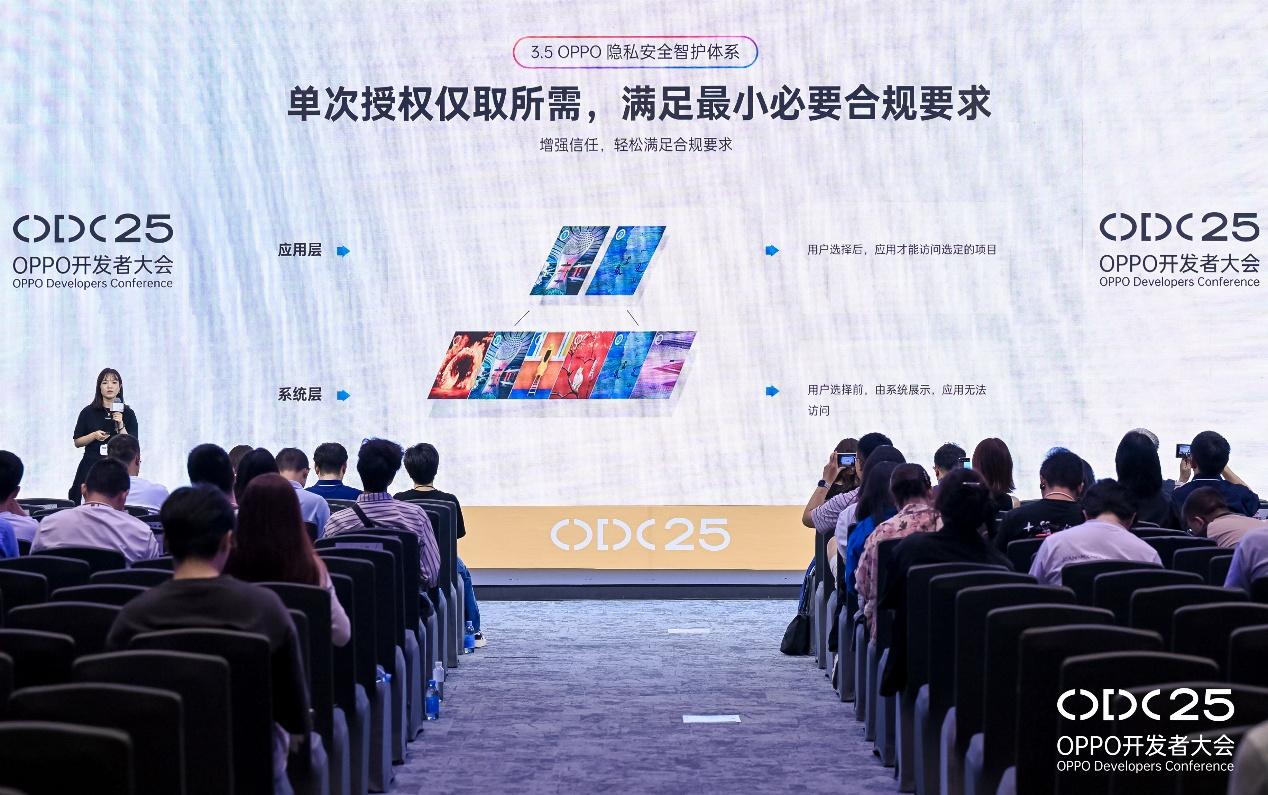Integrating AI into Operating Systems and Implementing Smart Services on a Large Scale: The Dawn of Smartphone Revolution 2.0
![]() 10/23 2025
10/23 2025
![]() 570
570

By | Intelligent Relativity
The smartphone industry is frequently seen as trapped in an 'involution' cycle: leading manufacturers heavily promote yearly functional upgrades and innovations in their products, yet consumers' enthusiasm for upgrading their phones due to improved software and hardware has waned.
Nowadays, smartphone users are less inclined to label themselves strictly as 'Apple users' or 'Android users.' They also pay less attention to whether their phone's operating system is based on Android 15 or iOS 18. At similar price points, even with operating system names appended with suffixes like 'Pro,' 'Plus,' or 'Max,' there are no fundamental differences in user experiences.
Growing evidence indicates that smartphone manufacturers must now place their bets on AI, which is emerging as a new catalyst for industry growth. However, betting on AI involves more than simply pre-installing a few AI-powered smart service apps. Practices by manufacturers such as OPPO demonstrate that leveraging AI to comprehensively optimize core phone functionalities, reconstructing operating systems with AI, and making AI a central driver of hardware updates have become the long-awaited growth engines for the smartphone industry.
AI and Smartphone OS Integration: A New Path of 'Infrastructure-Style Innovation'
From a market performance perspective, the global concept of 'AI smartphones' has yet to significantly boost the market.
Market research firm IDC once projected that by 2028, global AI smartphone shipments would reach 912 million units, accounting for 54% of the smartphone market share. However, as of autumn 2025, a quarter of the way to this forecast, survey data from tech media outlet CNET reveals that only 11% of smartphone users in the United States chose to upgrade their phones in 2025 due to new AI features, marking a 7% decline compared to similar surveys in 2024. Additionally, 30% of respondents found the practicality of AI features limited and lacked anticipation for more AI capabilities. Currently, the primary factors influencing phone upgrades are price (62%), battery life (54%), storage capacity (39%), and camera functionality (30%), showing little change from the past.
The 'AI smartphone' concept faces challenges in market adoption, partly because consumers are realizing that current AI features essentially optimize existing functions like photo editing and life assistants, failing to comprehensively transform smartphone-related scenario experiences—it's still the same stuff, tied to apps rather than the phone itself.
Smartphone manufacturers have not entirely overlooked this issue. In 2023 and 2024, they actively promoted concepts like 'self-developed large models' to create breakthrough apps, showcasing strong market ambitions. However, manufacturers gradually realized that, except for Apple, despite their leading positions in the commercial ecosystem, developing large models requires massive resource investments better suited for tech giants like Alibaba and OpenAI. Enormous power consumption, chip investments, and vast data support are, in the short term, unaffordable for most smartphone manufacturers.
A practical example is that even powerful companies like Manus failed to meet expectations in application development. For instance, the task of 'generating a PPT with one sentence' took nearly an hour for related intelligent agents to complete by calling various APIs, lagging behind free tools like DeepSeek or Grok. This led Manus to adjust its operational strategy in summer 2025 after a brief surge in popularity in spring.
Since 2025, annual new product launches by major smartphone manufacturers have shown subtle shifts compared to the previous two years—adjusting their development direction to 'AI-empowered systems/developer ecosystems,' a rational choice based on prior industry practices. Developing AI software directly offers a relatively low return on investment, while optimizing operating systems with AI technology is more feasible.
Over the past two years, technological advancements in AI accumulated by smartphone manufacturers can be integrated through an intelligent agent approach to build AI operating systems (AIOS). Previously, AI features introduced at annual launches often existed as scattered applications. An AI-centric phone OS, however, can serve as a central platform to understand user needs, decompose tasks, and allocate them to various application developers.
With AI algorithms, phones can automatically call various apps to complete complex tasks and continuously optimize the OS environment by learning user preferences, eliminating the need for repetitive manual settings. Compared to other intelligent agents, phone AIOS relies on on-device AI, reducing frequent cloud API calls and significantly improving response speeds.
This aligns closely with Apple's concept of 'personalized intelligence'—featuring strong performance, intuitive user experience, deep integration, high personalization, and privacy protection—which is also the core direction of OPPO's 'AI + All-Scenarios' strategy proposed this year.
A recent typical case is OPPO's Developer Conference on October 15, where OPPO unveiled a new direction for its AI strategy—'New Computing, New Perception, New Ecosystem.'
Supported by three technological pillars—On-Device Compute (end-side intelligent computing), PersonaX (memory symbiosis engine), and Agent Matrix (intelligent agent ecosystem framework)—the strategy aims to create a symbiotic intelligent system with users, leading to a personalized AIOS. Through these innovations, OPPO's ColorOS 16 will better understand user habits, offer more personalized services, and drive deep integration of AI and operating systems, laying a solid foundation for future intelligent terminal experiences.

Additionally, OPPO's Developer Conference highlighted developer ecosystem construction: after developers publish apps to software stores, AI-empowered entry points like Xiao Bu Suggestions and Intelligent Agent Zone can precisely recommend apps to users in need, enhancing service efficiency.
This means that before fostering closer connections between developers and users, OPPO has completed the construction of AI 'infrastructure.' This ensures precise matching of high-quality developer services with user needs, facilitates efficient intelligent upgrades, and enables bulk implementation of smart services.
In layman's terms, this strategy resembles China's infrastructure construction approach during its economic upswing: first, improve infrastructure to create favorable conditions for subsequent industrial and commercial development, building an efficient and modern foundation. Applying this to OPPO's phone OS, infrastructure corresponds to the phone OS, factories to software developers, and business districts to future, more powerful AI software—exactly the development direction advocated by OPPO.
Consequently, a change occurs: for users, smart services are now delivered by the 'phone' rather than individual apps, and the entity enabling developers to realize value is no longer a single APP or platform but the phone manufacturer's ecosystem.
Beyond 'AI + All-Scenarios': AI Integration into OS Addresses Privacy Concerns
In addition to enabling 'AI + All-Scenarios' services, AI empowerment of smartphone OS effectively addresses privacy concerns in AI phones by retaining personal data on local devices.
According to current user agreements for various intelligent agents and large models, regardless of whether users pay, using AI products implicitly allows AI vendors to access their conversation data for product optimization.
Given smartphones' deep integration into users' lives, this data collection model fails to fully reassure users. Before the AI boom, some Chinese users already worried about mobile data security, such as fearing that daily conversations might be collected, leading to targeted ad push by e-commerce apps.
Under current AI technology, these concerns have become more realistic. With AI's advancing natural language processing capabilities, it can now accurately understand human language. Even spoken instructions considered ambiguous or containing multiple information points three to five years ago can now be accurately interpreted by large models.
As smartphone smart services become increasingly prevalent, the traditional model may expose users to higher multi-source data privacy risks with more services, undermining trust in smart services. Thus, establishing robust data security mechanisms is crucial.
Based on this, Apple emphasized in its 'Apple Intelligence' vision the need to process sensitive data on-device, providing personalized services while ensuring privacy. However, Apple's iOS operates in a closed ecosystem, posing greater challenges for Android-based phone manufacturers to achieve similar privacy protections.
Under the current ecosystem, using cloud-based AI apps requires users to grant device and data access permissions to various apps, sharing personal life details and usage habits. After AI empowerment of smartphone OS, while users still need to grant permissions, they are only given to on-device AI, not multiple vendors' cloud AI. Retaining data locally improves service response speeds and enhances data security.
Take OPPO as an example: at its Developer Conference on the 15th, OPPO introduced specific privacy protection measures: through system-level security controls like Picker, it provides secure access channels for highly sensitive privacy data, implementing the 'minimum necessary' principle at the technical level. For instance, when uploading personal photos, users only need to select the required images, and apps can only access the selected content, not the entire gallery. The entire authorization process does not interrupt chatting or sharing operations, effectively mitigating data leakage risks while ensuring a seamless user experience.

Conclusion
The core goal of Smartphone Revolution 2.0 is to address consumers' motivation to upgrade their phones. At its essence, one of the primary objectives of all phone manufacturers' efforts is to stimulate upgrade willingness by providing superior services.
In the past, users often complained about redundant hardware features, while manufacturers faced indifferent responses to product upgrades. Even with continuous breakthroughs in camera pixels, chip performance, manufacturing processes, and device thinness, price discounts remained the primary driver for consumer upgrades, making e-commerce promotional events crucial for phone sales growth.
However, with the deep integration of AI technology and smartphone OS, industry rules may change. When OPPO users enjoy all-scenario smart services through system-level AI infrastructure and form usage habits, future hardware upgrades driven by AI performance needs could become a new growth point to activate the market.
*All images in this article are sourced from the internet.








